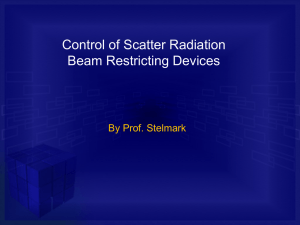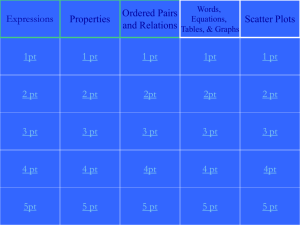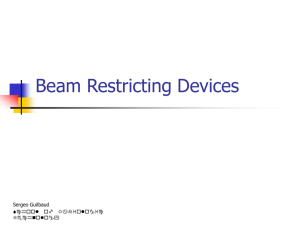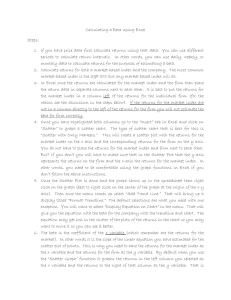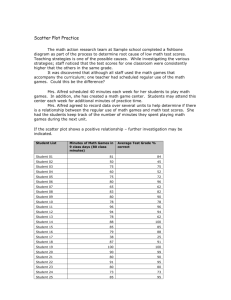6. Beam Restricting Devices
advertisement
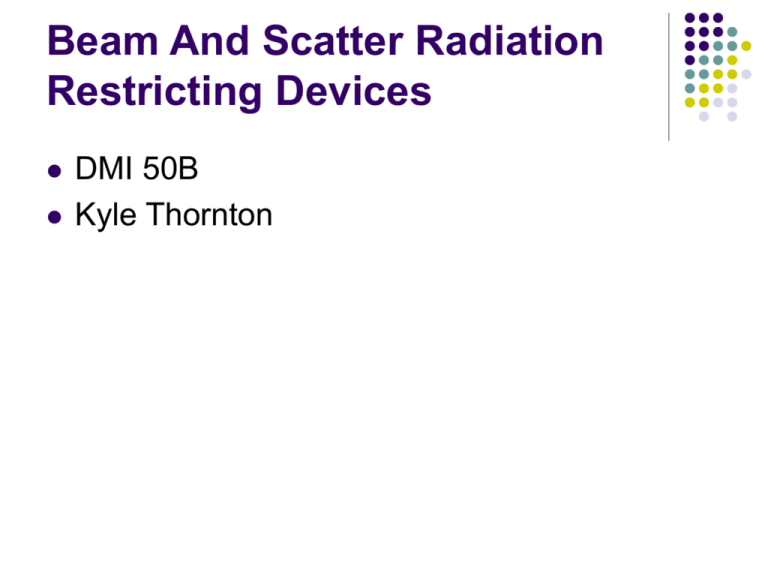
Beam And Scatter Radiation Restricting Devices DMI 50B Kyle Thornton Scatter Radiation Compton interaction Higher kVp energies in diagnostic range As scatter increases, radiographs lose contrast Radiographs will look dull, blurred, and fogged Factors Affecting Scatter Radiation kVp Field size Patient or part thickness kVp Compton interaction increases with increasing kVp Scatter radiation increases Scatter radiation is reduced by using collimators and grids Decreasing kVp is not always desirable Increases patient dose Beam Field Size As field size is increased, scatter radiation increases Restriction of field size improves image quality Even more important during fluoroscopy Patient Or Part Thickness Scatter increases with patient or part thickness A chest x-ray will result in more scatter than an arm x-ray Compression devices reduce patient thickness and improve quality Compression Used to Decrease Effects of Scatter Radiation Beam-Restricting Devices Two types of devices to reduce scatter Restricted for two reasons Beam restricting devices Grids Reduce patient dose Improve image contrast Three types of beam-restricting devices Aperture diaphragm Extension cones and cylinders Variable aperture collimator Positive beam limitation Different Types of Beam Limitation Devices Aperture Diaphragm Simplest of all beam-restricting devices Lead or lead-lined plate with an opening Used with older head units Cannot see a light Extension Cones And Cylinders Modifications of aperture diaphragms Primarily used for headwork, L5-S1 Fixed openings Generally not light localizing Cones and Cylinders Comparison of Sinuses W/WOut Use of Cones Variable-Aperture Collimator Light localizing Most commonly used A series of shutters and mirrors used Light field must coincide with x-ray beam Variable Aperture Device Schematic Drawing of the Variable Aperture Device Positive Beam Limitation Devices Automatically collimates to the size of film used Does not relieve technologist of having to collimate to anatomy of interest
